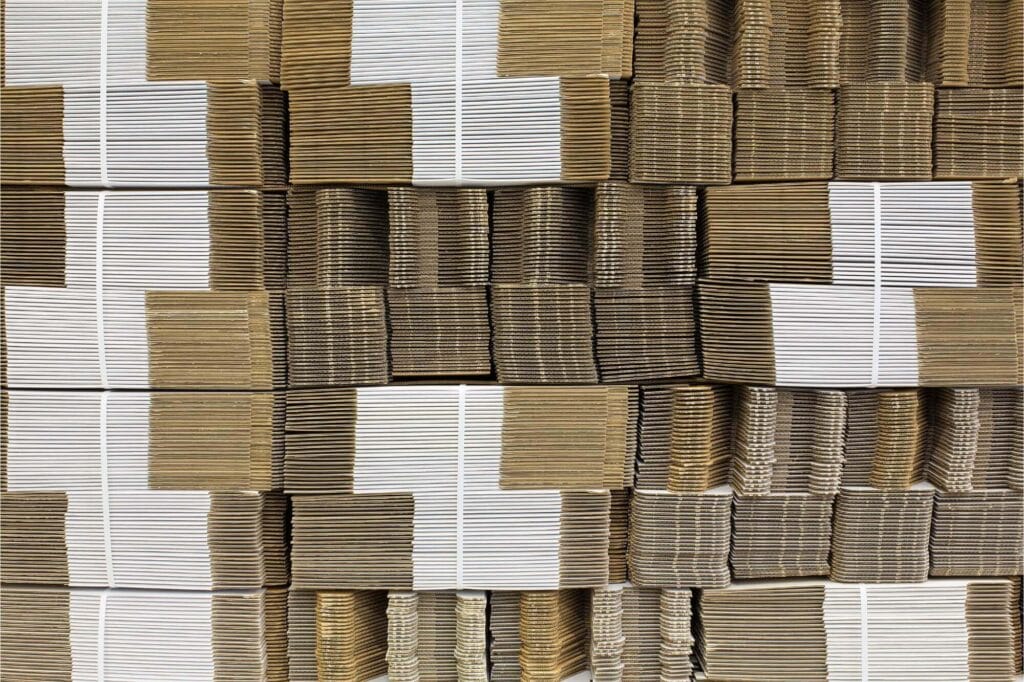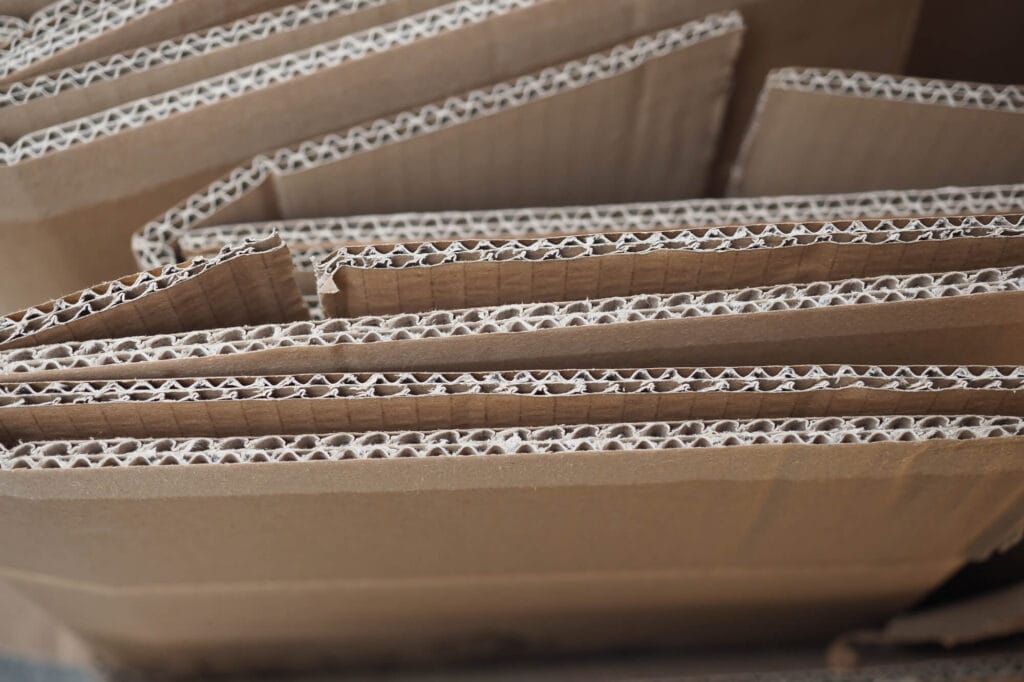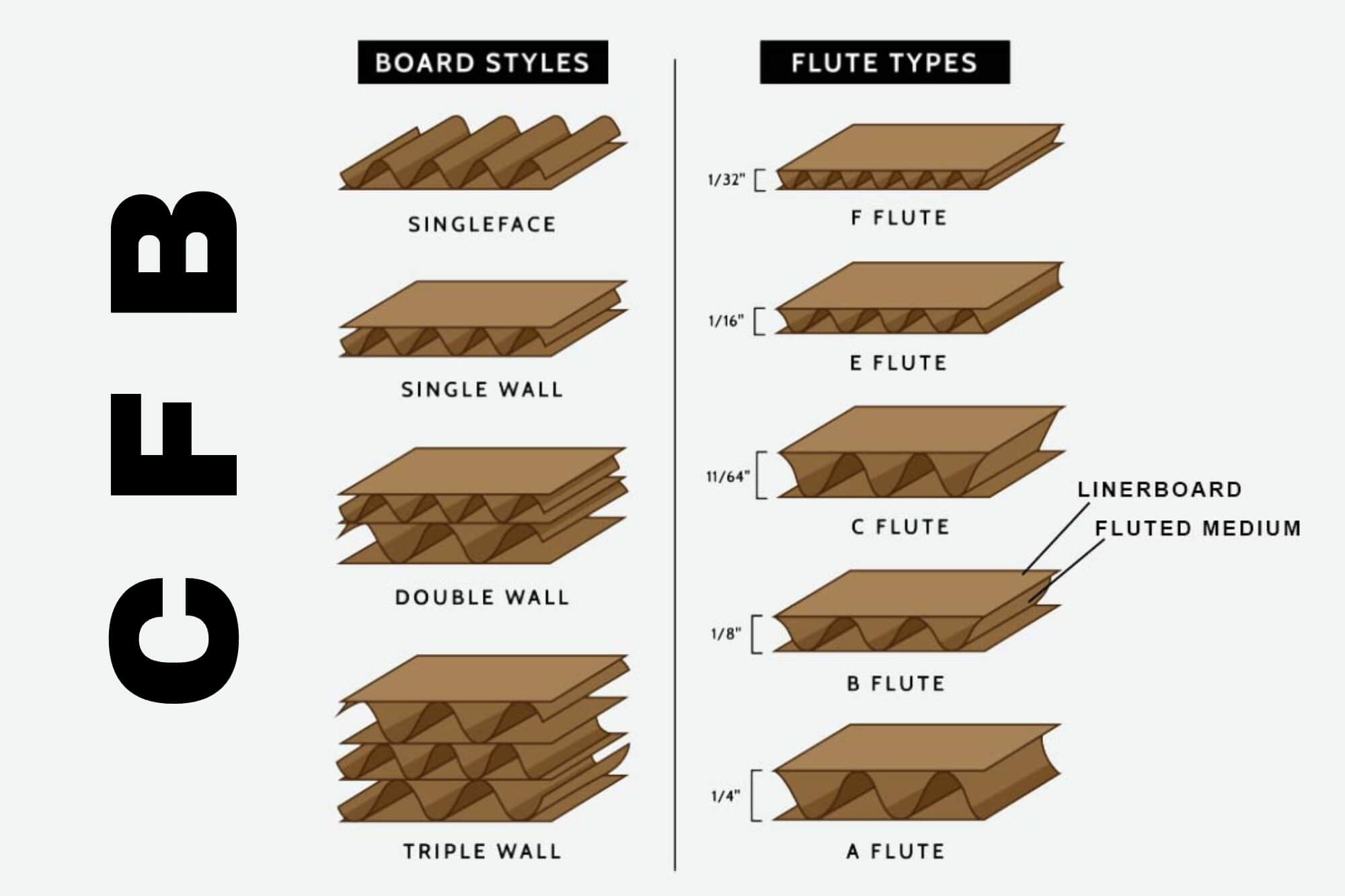"Corrugated Cardboard is one of the most important inventions of the 20th century."
- Richard Feynman
Corrugated cardboard boxes are a ubiquitous sight, from store shelves to shipping containers. But beneath that seemingly simple brown exterior lies a world of engineering. The key to a corrugated board’s strength and functionality lies in its flutes, the wavy inner layer that creates structure and cushioning. Understanding the different types of flutes empowers you to choose the perfect box for your needs.
Imagine a corrugated board as a sandwich. The two flat outer layers are called liners, typically made from strong kraft paper. Separating these liners is the fluting medium, a wavy layer that gives the board its characteristic strength. The flute size refers to the height and shape of these waves.
Here’s where it gets interesting: flutes come in various types, designated by letters (A to F and even smaller micro flutes). Don’t be fooled by the alphabet – the letter designations reflect the order of invention, not size. Generally, larger flutes offer superior stacking strength and cushioning, while smaller flutes provide better printability and a smoother surface.



Unveiling the Flute Symphony: Common Flute Types
- A-Flute: The heavyweight champion. Boasting the largest flute size (around 5mm or ¼ inch), A-flute offers exceptional stacking strength and compression resistance. It’s ideal for heavy products, long-distance shipping, or situations requiring maximum protection.
- B-Flute: The middle child, balancing performance and aesthetics. B-flute (approximately 3mm or ⅛ inch) offers good stacking strength and crush resistance while providing a flatter surface for high-quality printing and die-cutting. This makes it a popular choice for retail displays and packaging for lighter items.
- C-Flute: The all-rounder. C-flute (around 4mm or 3/16 inch) strikes a perfect balance between strength, printability, and cost-effectiveness. It’s the most widely used flute size, suitable for various applications, from shipping boxes to product packaging.
- E-Flute: The lightweight maestro. E-flute (approximately 1.5mm or 1/16 inch) is a thin and economical option. It offers good structural integrity for lightweight products while excelling in printability, making it perfect for high-graphic packaging and presentation boxes.
- F-Flute (and Microflutes): The thinnest of the thin. At around 1mm or less, F-flute and even smaller microflutes are ideal for very lightweight items or those requiring a premium aesthetic. They provide minimal cushioning but excel in creating high-quality, shelf-ready packaging.
Choosing the Right Flute: It's All About Balance
The perfect flute for your corrugated board depends on your specific needs. Consider these factors:
- Product Weight and Fragility: Heavier or more delicate items require a stronger flute like an A-flute for optimal protection.
- Stacking Requirements: If your boxes will be stacked high, choose a flute with good stacking strength, such as A or C-flute.
- Printing Needs: B, E, and F-flutes offer a smoother surface for high-quality printing, ideal for visually appealing packaging.
- Cost Considerations: Generally, larger flutes are more expensive due to increased material usage.
Beyond the Basics: Double-Wall Wonders
For ultimate protection, corrugated boards can be combined into double-wall constructions. These feature two inner flute layers, often a combination like BC (B-flute + C-flute) or EB (E-flute + B-flute), offering exceptional stacking strength and cushioning for heavy-duty applications.
By understanding the different types of flutes and their properties, you can make informed decisions when choosing corrugated cardboard boxes. Whether you prioritize strength, printability, or cost-effectiveness, there’s a perfect flute type to ensure your products arrive safely and make a lasting impression.
We @ PackDesk can help you with all your specialty box developments & procurements at the best prices. Connect with us today.


